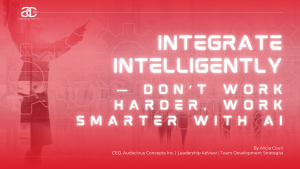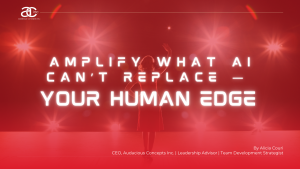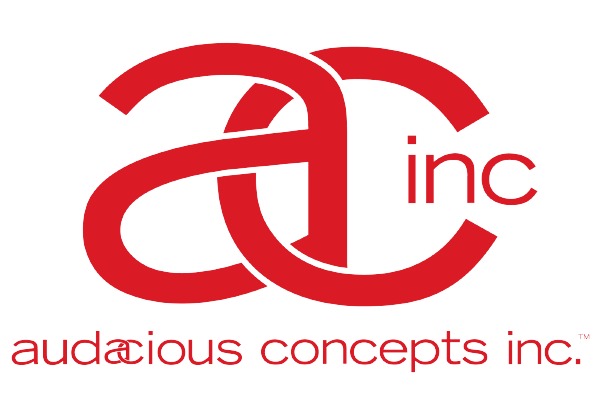By Alicia Couri
CEO, Audacious Concepts Inc. | Leadership Advisor | Team Development Strategist
It’s not about using AI… It’s about using it well.
Let’s face it: AI is everywhere.
From inbox filters and automated reports to predictive hiring tools and AI-generated content, most leaders aren’t asking “Should I use AI?” anymore.
They’re asking:
“How do I use it without drowning in it?”
That’s the shift: from AI adoption to AI integration—and it makes all the difference between being overrun by noise or amplified by strategy.
🧭 Signal vs. Noise: The Leadership Filter
Every week, a new AI tool launches with the promise to save time, boost revenue, or unlock productivity.
But more tools don’t mean better results.
They often create confusion, distraction, or worse—dependency without clarity.
What’s the key?
Knowing what’s worth your attention—and what’s just AI noise.
Ask yourself:
- Does this tool reduce decision fatigue or increase it?
- Does it align with how my team naturally works and thinks?
- Does it serve strategy—or just add tasks?
The smartest leaders aren’t using more AI.
They’re using less—but better.
🛠️ AI Tools That Actually Help You Lead Smarter
When used intentionally, AI can support three critical areas of leadership:
1. Decision-Making
AI can process more data in seconds than we can in hours.
But you still lead the interpretation.
Use AI to:
- Analyze trends
- Forecast outcomes
- Surface blind spots in your plans
But don’t use it to:
- Make high-stakes decisions without context
- Overrule team intuition
- Avoid accountability
AI should support your judgment, not replace it.
2. Hiring & Team Alignment
Tools like Predictive Index (PI) and Kolbe™ paired with AI can help leaders:
- Hire for fit and instinct—not just skill
- Align roles with natural strengths
- Predict friction before it happens
My RightFit® RoleMap combines Kolbe data with role clarity to reduce turnover, improve collaboration, and help you build teams that work with less resistance and more flow.
Pairing this with AI tools allows you to streamline assessments, automate follow-ups, and spot patterns—but human intuition still leads the hiring decision.
3. Productivity & Delegation
AI can write, schedule, sort, and summarize.
Use it to eliminate energy drains, not relationship drivers.
Smart AI delegation:
✅ Automating meeting summaries
✅ Drafting first-pass content
✅ Scheduling, inbox filtering, CRM updates
Avoid AI delegation when:
🚫 Emotional tone matters
🚫 Context is nuanced
🚫 The outcome needs a human touch
✍️ Quick Exercise: The AI Delegation Audit
Create a list with three columns:
- Tasks I should still do myself
- Tasks AI can support
- Tasks I can fully delegate to AI
Then ask:
Is my time being spent where I’m most valuable—or most comfortable?
🎯 Final Thought: Use AI to Amplify, Not Accumulate
You don’t need to become an AI expert. But you do need to become AI-intentional.
Leaders who use AI well don’t just save time—they create space.
Space to think.
To lead.
To build culture.
To show up as the human your team actually wants to follow.
The future isn’t about mastering every tool. It’s about mastering your focus.
👋 Coming Next:
Part 5 — Mobilize Your Team: Build Cultures That Rise with AI, Not Resist It
We’ll explore how to lead through change, align talent, and keep your people empowered—not anxious—in the AI era.
#AIIntegration #HumanPlusAI #Kolbe #PredictiveIndex #AILeadership #ExecutiveStrategy #RightFitRoleMap #DecisionSupport #TeamSynergy


